
You might think that current affairs and newspapers are modern concepts that relate to our contemporary and forward-thinking world. And that once upon a time, things were very different. But were they really so different? Let’s take a look at how the world of clothing has changed over time.

Contratti catalogue cover – 1903-1904, Milan (1)
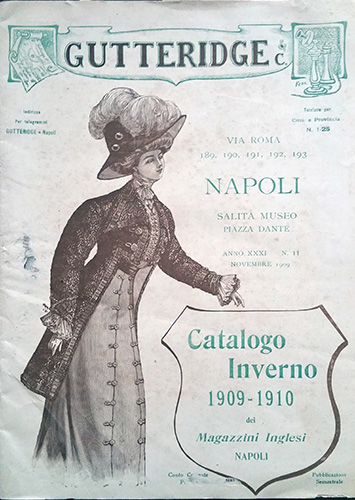
Gutteridge catalogue cover – 1909 -1910, Naples (2)
Two clothing catalogue covers and two dates in time: 1903 (Photo 1) and 1910 (Photo 2). A decent jump back in time, and yet… we don’t see anything particularly new, but rather, something markedly better. Both catalogues were released by department stores, one in Milan and the branch of a large English department store in Naples. Back in 1910, Neapolitans were already able to purchase clothes from large English department stores.
And yet, we’re not talking about the large department stores we’re familiar with today, which spring up all over the place and demonstrate little evidence of the high-quality and tasteful clothing culture of yesteryear, opting to sell truckloads of tatter instead. No, these were department stores that offered high-quality products.
Garments for sale were sketched out in catalogues thanks to highly-detailed images created by very talented designers and sketchers. These drawings were then accompanied by individual product descriptions, just as you’d find on the internet today. Garment fabrics were also specified, and it was assumed that customers knew about different fabric types. You could choose the type of material you wanted for any clothing purchase, something we have forgotten to do these days.
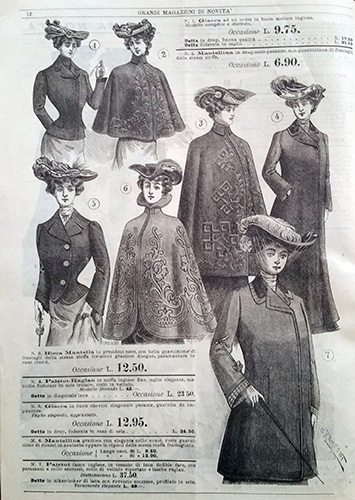
Women’s jackets and cloaks (1903-1904). (3)
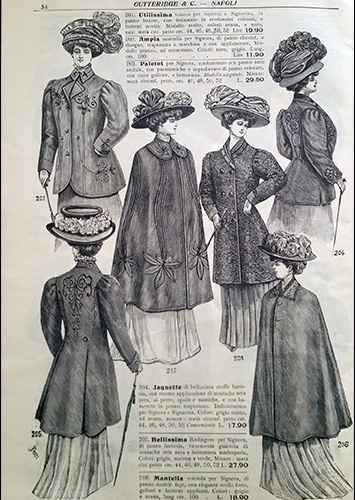
Women’s jackets and cloaks (1909-1910). (4)
The interested lady, who these days goes by the term “user” – and is therefore deprived of all elegance, sex and personality – could once upon a time choose to have a jacket or coat delivered to her home, made from a choice of different fabrics (photos 3 and 4): melton, beaver, or cheviot – some sales assistants aren’t even aware of these particular details these days. Yet our grandmothers, great-grandmothers, and great-great-grandmothers, who were more often than not housewives rather than career women, knew what beaver material was, and it wasn’t something you could blag.
This clothing culture was so widespread and entrenched that it could be written about in a store catalogue with the certainty that the “user” would understand. Because this sort of knowledge was a part of people’s education – an education in knowledge. In modern times, we have much more widespread access to information, which is more democratically available, yet something doesn’t quite fit. Certain fundamental notions escape us, because not only do the majority of people not know what material their clothes are made from, but they also don’t know why a light comes on when they flick a switch, or why a car starts when they turn the key in the ignition, despite being increasingly well-informed.
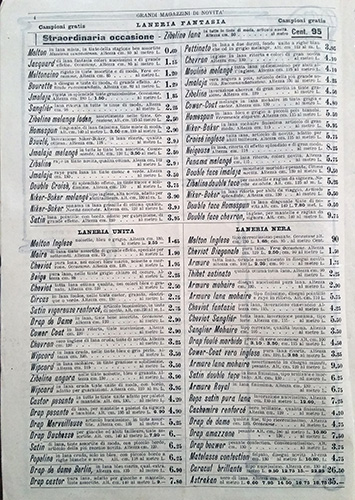
Wool price list and types on offer (1903). (5)
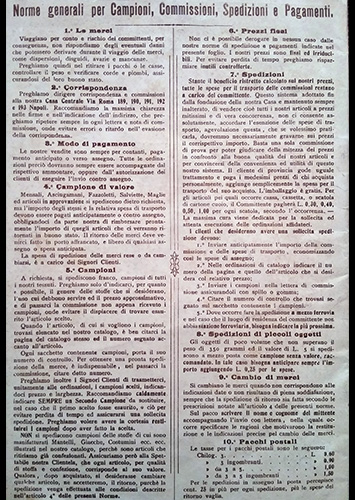
Terms and Conditions of Sale (1910). (6)
All fabrics available in the catalogue were scrupulously detailed (5 photos), along with the conditions of sale (Photo 6), which are more or less the same as those that apply when you shop online today.
To give you an idea, when these catalogues were published, penicillin had not yet been discovered, Italy still had a king, the Ottoman Empire still existed, and Selfridges department store had not yet opened in London– it opened in 1910.
